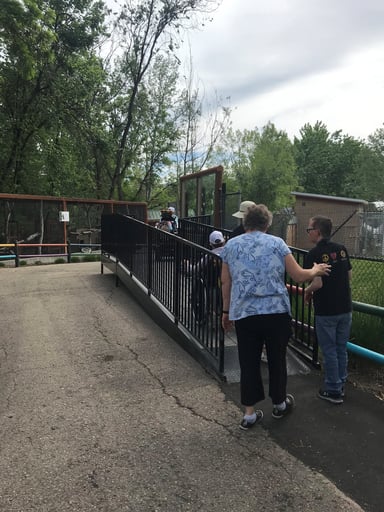Quality of Life Grantee Spotlight: Zoo Boise
Join Our Movement
What started as an idea has become a national movement. With your support, we can influence policy and inspire lasting change.
Become an Advocate
Guests surveyed before the platform installation rated the exhibit a 2.9 on a five-point scale, with one being low and five being high. The rating increased to 4.8 after the installation.
“This was a clear improvement in the ability of guests living with paralysis to see the animals,” says Miller. “It is amazing how one small investment can make such a big difference to the experience. The new platform has changed the activity in an area that was once quiet and is now full of activity.”
One caretaker who brings a group to the zoo each summer stated, “Before, they couldn't see the animals. This is so much better. I’m glad to hear the zoo is making more of these changes.”
Since the nyala project was completed, it started a ripple effect to continue to improve the surrounding area. A large viewing window extending to the ground was installed in a nearby wooden fence, allowing visitors to see into the exhibit at all levels. In another area of the zoo, work is underway to install a giraffe feeding platform.
“All the positive feedback from the new nyala platform really got the team thinking more broadly about access and the range of easy fixes we could make to improve accessibility,” says Miller. “We have learned some interesting things from this project. Perhaps, most importantly, it has expanded our conversations with zoo visitors to better understand how to meet their needs.”
To learn more about our Quality of Life Grants Program, click here.
